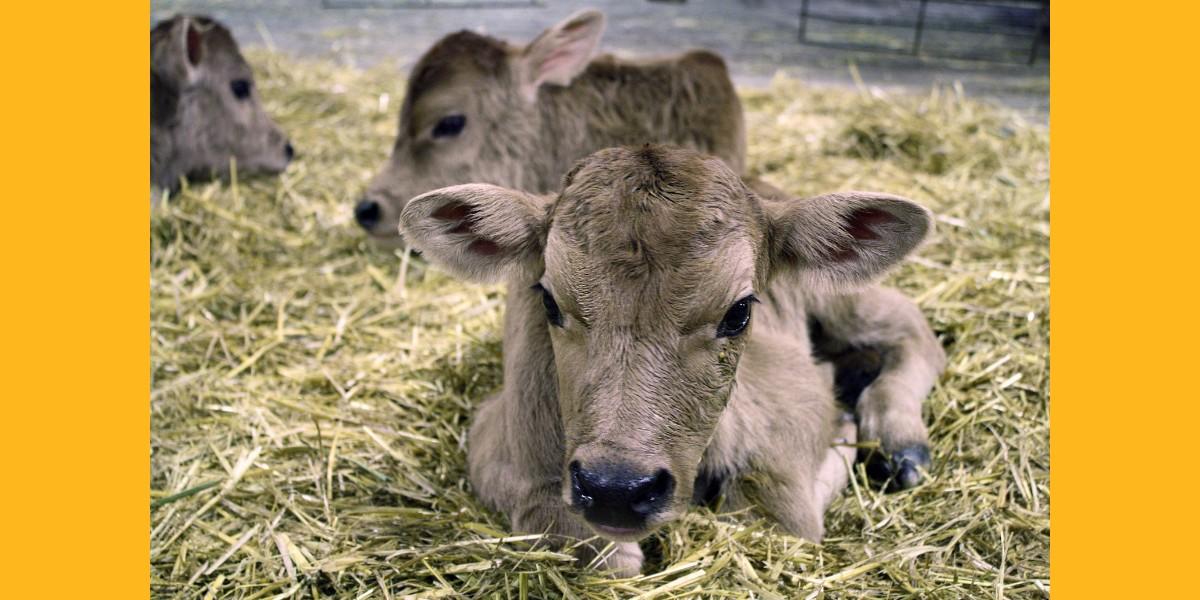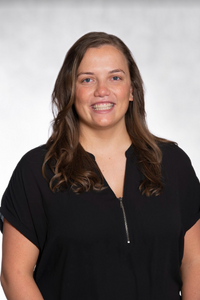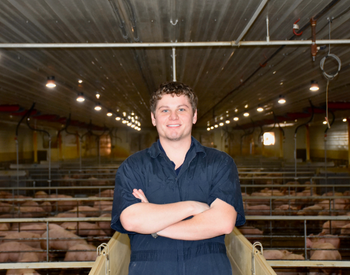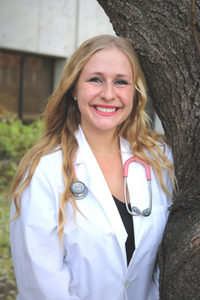Rewriting rural medicine
Addressing veterinary care shortages in rural areas is more complicated than a lack of students to fill empty roles

Addressing veterinary care shortages in rural areas is more complicated than a lack of students to fill empty roles
Growing up on her family’s beef farm, Kaylan Risacher developed a strong love for the agriculture industry and knew she wanted to pursue a career that would allow her to channel her passion for it.
“As I became more and more involved in the everyday operation, I also started to meet other people in the community that were just like my father—they had a strong love for their livestock and did everything in their power to take care of them,” Risacher says. “By pursuing a degree as a bovine veterinarian, I knew that I would be able to harness my passion for the agriculture industry and help producers just like my father.”

It’s a similar story for Seth Melson, whose family farm operations included raising custom feed pigs, corn, and soybeans. He wasn’t set on becoming a veterinarian from a young age, but the opportunity to shadow a vet during his senior year of high school put him on the path to pursue swine medicine.
“I really loved what they did. A lot of it was about how we prevent diseases from happening, not just treating them,” he says.
Risacher and Melson, both fourth-year DVM students at the University of Minnesota College of Veterinary Medicine (CVM), plan to practice in rural communities after graduation. They and other veterinary students with rural ambitions are in high demand as small Minnesota communities continue to struggle to attract veterinary professionals.

CVM is among those working to increase interest in practicing rural medicine among students through special programs and initiatives. Difficulty in recruiting veterinarians to rural practices isn’t unique to Minnesota.
In 2019, the USDA identified around 500 counties in the U.S. that are considered underserved by a veterinarian—a majority of which are in rural areas. But it’s important to note that the issue is more complicated than training enough students to fill empty jobs.
There are myriad reasons why rural practices in particular experience difficulty in filling and retaining veterinary positions, but they’re not as simple as they seem. One such misconception in the discussion of rural veterinary shortages is what constitutes a “rural practice.”
The word rural is often interpreted as the traditional mixed-animal practice with a food animal focus, with images of one-vet operations serving thousands of lonely square miles. But that vision is not always accurate in describing the need, according to Dr. Timothy Goldsmith.
Goldsmith is a professor in the Department of Veterinary Population Medicine and a former rural practitioner. He says that rural is better defined as any area outside the boundary of metropolitan areas rather than just wide-open spaces with low populations. That means some practices considered rural are actually located in large communities that simply fall outside of a metropolitan area.

There are a variety of practice types and jobs in these locations, which can include mixed animal, food animal-specific, equine-specific, small animal-specific as well as state and federal jobs focusing on food inspection and regulatory roles. The size of the practice can range as well from multiple-location and doctor practices to single-practitioner practices.
“I can name you multiple practices located in rural areas that are looking to hire a small animal-focused practitioner, which is a very different reality than thinking all rural jobs are a food animal or mixed animal practitioner,” Goldsmith says.
Still, there are practices that operate with one veterinarian and a lean staff. Joining that type of operation can be challenging for new graduates, especially if a practice doesn’t have a business manager to handle its financial and administrative needs.
“The veterinary curriculum is designed to primarily train students to be veterinarians, not business owners,” Goldsmith says. “Running a business is a different skill set than being a veterinarian, and that may be one of the biggest challenges especially with small, privately owned veterinary practices wherever you’re located. It’s the requirements and demands of business.”
Veterinary students at CVM do have the opportunity to gain business knowledge and skills through avenues such as joining the Veterinary Business Management Association. That knowledge also can be passed on through mentoring, which Goldsmith says a large majority of CVM students indicate is important to them as part of their career progression. Stepping into a practice as the sole veterinarian often means no mentoring is available.
Unlike their predecessors of decades past, today’s veterinary students and graduates are putting more emphasis on maintaining a healthy work-life balance. In a small practice in rural settings, it’s often the norm for a veterinarian to be on call for days at a time for routine and emergency situations.
It can mean spending hours on the road driving from farm to farm, completing paperwork after hours, and conducting consultations over the phone while traveling. Pair that with a rural location that may have fewer services, fewer entertainment options, and fewer spousal work opportunities, and a work-life balance can be difficult to maintain.

It’s a demanding job that is rife with the potential for burnout. For students and recent graduates, a significant aspect of maintaining a work-life balance is prioritizing mental wellness. It’s no secret that being a veterinarian is stressful in any setting, but the above factors can have a particularly negative impact on those practicing in small, rural practices.
Those challenges and others are ones that fourth-year DVM student Miranda Boll is aware could impact her life as a rural veterinarian, but her experience of watching her father care for their animals on their family farm and living in a community impacted by a veterinary care shortage keep driven to practicing in a rural setting.
“Growing up on a farm, I understand the concepts of long hours and lots of driving time,” says Boll, who’s interested in equine, bovine, and small ruminant medicine. “I also understand the reward that can come from that hard work. I feel my education has absolutely prepared me for those aspects.”
Nathan Debner, a fourth-year DVM student with plans to practice bovine medicine with an emphasis on dairy production, echoes the sentiment, saying the University has done a great job educating him on these challenges and how to mentally prepare for them.
“Most importantly, they have taught us that setting healthy boundaries is important to prevent burnout when working in a rural setting,” he adds. “Preventing burnout is equally as important as recruiting veterinarians. Recruiting rural veterinarians only to have them leave three years later does not help the rural veterinary shortage.”

The impact of burnout on the veterinary industry as a whole is very real and very costly. Research from the Cornell Center for Veterinary Business and Entrepreneurship puts the annual price tag at $2 billion in lost productively from poor performance, early retirements, and turnover.
Preparing DVM students for this reality after graduation is only part of a possible solution. It’s also up to rural practitioners to embrace the increasing desire for work-life balance. It’s a trend Risacher has observed during her time completing internships and externships at rural practices.
“I have met a lot of practitioners that value an adequate work-life balance and prioritize taking care of their associate veterinarians,” she says. “In addition to this, when discussing this topic with my classmates and professors, we have been prepared to advocate for ourselves as we are beginning our job searches.”
Encouraging students to consider rural practice as a career option starts in veterinary school. Engagement and mentoring by rural practitioners of potential future veterinarians that come from a rural background may be an important starting point for many students. However, being from a rural background is not a necessity.
Programs such as the recently started CVM partnership with South Dakota State University in Brookings to offer a 2+2 program, have goals to attract more students with an interest in practice in rural areas. Students complete their first two years of instruction in Brookings and complete their third year of instruction and fourth-year clinical rotations in St. Paul. About 20 students began this program in September 2021.
While in veterinary school, students also have opportunities to explore rural medicine through experiential learning. Many rural veterinary practices across the region offer “externship” opportunities for fourth-year DVM students, as well as summer job or internship opportunities. Additionally, CVM offers an online job posting service for veterinary practices to recruit DVM students and works closely with the Minnesota Veterinary Medical Association to organize an annual career fair where practices can recruit new employees.
Exposing students to the realities of rural medicine through opportunities to speak with clinicians and see the workload firsthand may change students’ perceptions of what these types of jobs entail and potentially encourage them to consider working in a rural setting.
“Each practice is unique and different,” Goldsmith says. “So it's really important, especially for new grads, to have a picture of what they want to do, what their goals or their objectives are, what they want out of the job, and then communicate that to the employer and the practice, and make a decision on whether that works.”
State and local governments also offer incentives for students to work in rural practices. If newly graduated DVMs choose to stay in Minnesota, the state offers a loan repayment program that is targeted toward individuals who practice in rural areas and spend at least 50 percent of their time treating food animals.
There isn’t a one-size-fits-all solution to addressing rural veterinary shortages. In addition to incentives, Goldsmith says practice models will need to evolve to become accommodating of the more balanced lifestyle sought by the new generation of veterinarians while evolving to meet the needs of clients at the same time. In the end, it’s up to each student to decide what kind of job they’ll pursue.
“You have to ask yourself what kind of veterinarian you want to be,” Goldsmith says. “One of the great things about the veterinary profession is, it's really broad. One of the challenges of the veterinary profession is it's really broad. So students have to sit down with themselves and decide what they want to do and where they want to do it.”